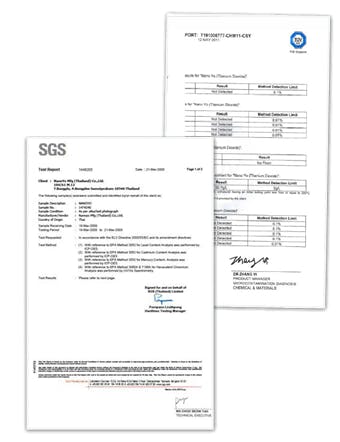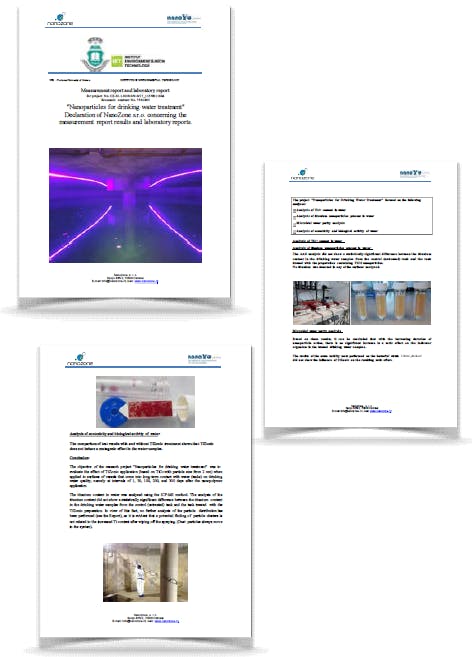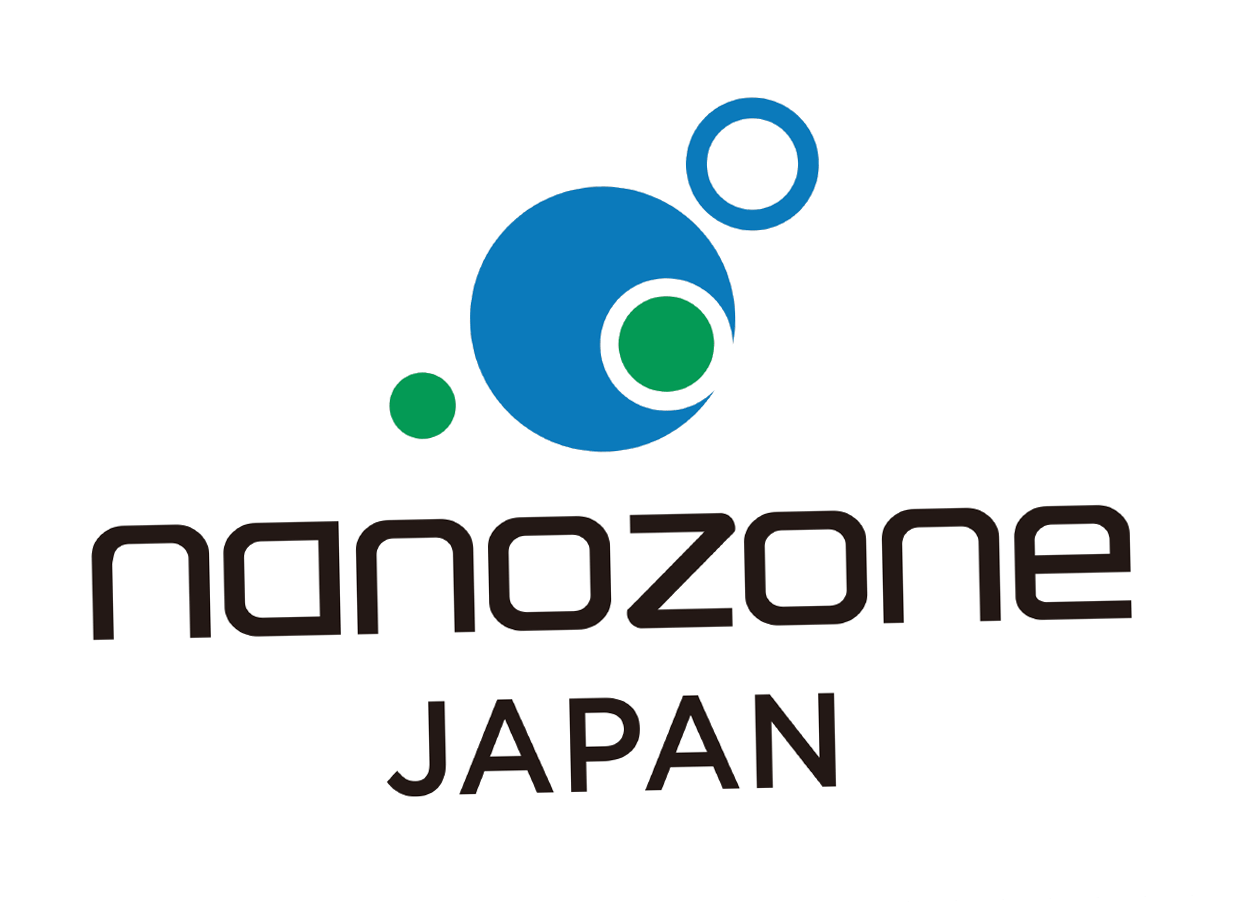
Nanozone catalog
About photocatalyst mechanism
The photocatalyst mechanism is that light energy is converted to titanium oxide particles to generate hydroxides (OH-) from superoxides (O2-) on the surface of O2 particles in the air and H2O in water. This causes oxidative decomposition and inactivation of all types of microbiota, such as mold and bacteria, as well as viruses and ammonia and VOCs that cause odors. On the surfaces coated with nanozone COAT, the super nano titanium oxide of nanozone SOLUTION absorbs the sunlight as well as light from other sources such as fluorescent lights and LEDs.
IMAGES
TitaniumOxide Active Oxygen
OrganicSubstances(Virus,Bacteria,etc)
Light
(Sunlight・FluorescentLight)
Reacts with oxygen and water molecules
CreateActive Oxygen
(=photocatalystEffect)
Decomposes into water(H2O)andcarbondioxide(CO2)
Decomposition
TitaniumOxide
TitaniumOxide Active Oxygen
OrganicSubstances(Virus,Bacteria,etc)
(Sunlight・FluorescentLight)
CreateActive Oxygen
(=photocatalystEffect)
Decomposition
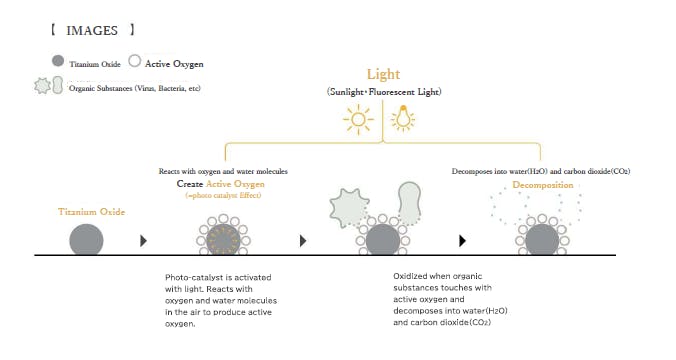
Differences between nanozone SOLUTION and other products
No chemical binder
Titanium oxide particles are “selfbonded”

![]() nanozone SOLUTION : Advantages of selfbonding
nanozone SOLUTION : Advantages of selfbonding
Other titanium oxide
Particles is NOT capable of selfbonding on surfaces
Binder Required
Binder Required
When binder glue comes off, it also
Peeled Off Particles
Peeled Off Particles
Because particles are buried in the binder
Required Strong Sunlight
Required Strong Sunlight

nanozone SOLUTION’s titanium oxide
When the water evaporates after coating, the titanium oxide particles form strong bonds with all types of surfaces for a long period of time.
Particles is capable of selfbonding on surfaces
No Binder Required
No Binder Required
No binder glued on surfaces
No Peel Off
No Peel Off
No binder gluing and exposed particles
Activated all titanium oxide particles with a small amount of visible light
Activated all titanium oxide particles with a small amount of visible light
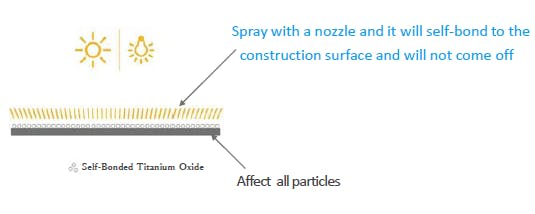
Footprint of titanium oxide photocatalyst
(room for improvement)
(room for improvement)
Titanium oxide is one of the few photocatalyst used for industrial purposes. About half a century after its discovery, trelated products and services are easily available, their recognition and penetration rate are low.
Potential Causes
【Issues with Titanium Oxide】
Requires strong sunlight for photocatalyst
+
【 Issues from merchandise sellers】
Overstated with its effect (Tokyo university brand, easy to be theorized)
Overpriced; and not worth the effect
Gap between pricing and actual effects
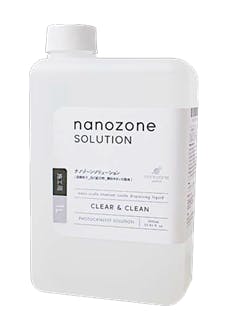
nanozone SOLUTION is the only products that delivers powerful and ideal photocatalytic effects
Use for Glass Surface! Advantages of selfbonding 1/3
Selfbonded titanium oxide be sprayed on glass surfaces, which are difficult surfaces for application of titanium oxide; since it is firmly bonded, it does not peel off; it can also be applied as a UV coating.
The cover glass was hung upside down for one day under ambient conditions. Subsequently, the surface was observed again by AFM. Figure 3 shows an AFM image of the surface. It can be seen that the particles did not peel off from the surface.
These images show that NanoYo Japan TiO 2 particles can adhere even on very flat glass and can hardly be removed from the glass.
It is easy to conclude that it is much more difficult to pull particles away from rough surfaces such as fabric, wood, and wall materials.
Shuji Adachi Professor of
Division of Food Science and Biotechnology, Kyoto University, Kyoto 606-8502, Japan
These images show that NanoYo Japan TiO 2 particles can adhere even on very flat glass and can hardly be removed from the glass.
It is easy to conclude that it is much more difficult to pull particles away from rough surfaces such as fabric, wood, and wall materials.
Shuji Adachi Professor of
Division of Food Science and Biotechnology, Kyoto University, Kyoto 606-8502, Japan

Use for Inner Space! Advantages of selfbonding 2/3
The selfbonding nanozone SOLUTION (selfbonded titanium oxide) is exposed as a neatly aligned layer on the coated surface of nanozone COAT. So it can be installed even in a place with faint light, as indoor environments.
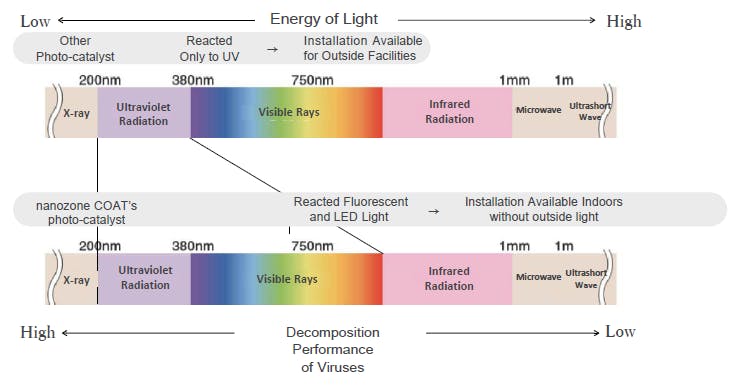
nanozone SOLUTION – Assured, Safe, and Transparent
The ingredients of the nanozone SOLUTION are very simple.
Water (drinking criteria)+Titanium Oxide + Alcohol 5% for dispersing titanium oxide
Water (drinking criteria)+Titanium Oxide + Alcohol 5% for dispersing titanium oxide
Titanium oxide used in nanozone SOLUTION is harmless to the human body and is recognized as a food additive.
It is also used as an antibacterial agent in toothpastes, cosmetics, and internal medicine. The safety of titanium oxide has also been reviewed and approved by the US Food and Drug Administration (FDA).
In addition, 5% isoprovir alcohol contained in the nanozone SOLUTION is added to stably disperse titanium oxide during the manufacturing process.
It is also used as an antibacterial agent in toothpastes, cosmetics, and internal medicine. The safety of titanium oxide has also been reviewed and approved by the US Food and Drug Administration (FDA).
In addition, 5% isoprovir alcohol contained in the nanozone SOLUTION is added to stably disperse titanium oxide during the manufacturing process.
*Alcohol disinfectants contain about 75% alcohol in general.
